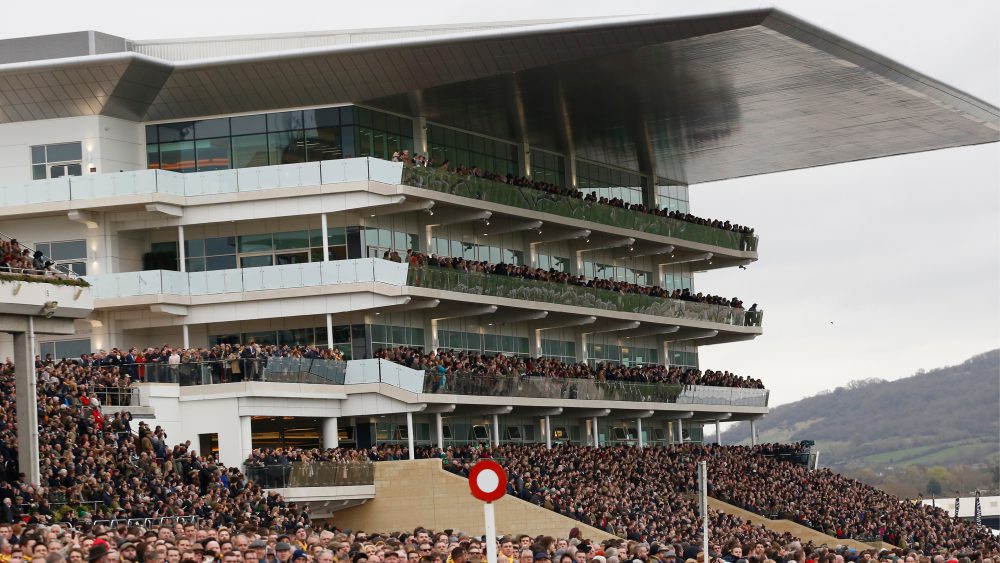Jump Pattern Book Blog 2017/18

Having recently published the latest edition of the Jump Pattern Book, the Chair of the BHA’s Jump Pattern Committee Adrian Grazebrook looks back on the 2016/17 campaign and ahead to what is in store for 2017/18.
The Cheltenham Festival meeting is commonly regarded as the pinnacle of the Anglo-Irish Jump racing year but, in 2017, none of the season’s top rated steeple chasers in the annual classification in any of the three categories won there. Douvan (174) was the highest rated of all, followed three pounds behind by the ill-fated Many Clouds (171). The novices Thistlecrack and Altior (170) came next, with Fox Norton (169) as the best over the intermediate distance.
Compare this with the two previous years when there were seven horses rated 170 or more, and it will be seen that, in 2016/17, the best of the experienced chasers were among the lower reaches, though the total number rated at 160 or above (35) was well up to scratch.
The story at the top over hurdles was similar, with Buveur d’Air (169) posting the lowest top rated figure for over a decade, but the total of 14 hurdlers rated at 160 or more was again in line with historical averages, as were the numbers of promising novices, though none stood out.
Concerns have been expressed in some quarters about an inflation of the Jump Pattern in recent years to uncompetitive racing, with the best horses able to gain easy pickings in small fields and without having to meet one another. It is true that Pattern and Listed races have been added to the programme, and indeed this process has continued for 2017/18, but not without careful consideration from the Jump Pattern Committee (JPC) and the BHA executive.
These additions are introduced for a specific reason: either to fill a recognised gap in the programme, where good horses require a Class 1 race; or to promote some specific race planning objective, such as to encourage the greater participation of mares.
The programme for mares is one which has been expanding for some years now. First with bumpers, then hurdles and then moving on to steeple chases. This year’s changes are a tidying up exercise to fill in a few gaps identified in the mares’ programme.
The Pattern is under constant review and its primary purpose remains to give targets and opportunities, with black type where justified. It is inevitable that some races may in some years have smaller than average fields, particularly in the novice ranks.
However, even if there are sometimes only a few top quality horses in some categories on occasion, there remains the need to give those horses the best opportunity to shine and progress, and indeed an incentive to bring them to the course and run, and be tested. If a race regularly fails to meet the parameters, appropriate action can always be taken.
We recently moved away from the process whereby any racecourse could propose a race with a good ratings record for consideration for upgrading, effectively asking the JPC to say “why not”. Now it is the Committee, via the executive, which asks “why” and “what”, and then invites racecourses to bid for the opportunity. Happily they do so!
In a further effort to reinforce quality, we are always reviewing the qualifying parameters for Pattern and Listed races, to align them with the top rank of the horse population. A decade ago, the qualifying average rating for a Grade 1 was increased by 5lbs to 155; subsequently all novice parameters were increase by 5lbs.
Now the open races below Grade 1 have been put up by 5lbs in their turn, to catch up with the races at the very top. Full details of these calculations and their significance appear among the ground rules for the Pattern at the end of the Jump Pattern Book.
In essence, each grade now requires the performance of the best four horses to average 5lbs higher than the next grade below, and novice races at each grade are fixed at 15lbs below the non-novice equivalent. The 2016/17 renewals of Pattern and Listed races have been judged against the new increased parameters. The protocol demands that, before downgrading, a warning letter should be sent to the racecourse concerned, and a number of these have been dispatched.
It seems almost inevitable that downgrades will occur next season. However it should always be remembered that the JPC does retain a degree of discretion, though that is used sparingly.
So what are the changes for 2017/18?
Firstly, three new Listed mares’ races:
• A 3m Novices’ Chase at Newbury in December
• A 3m Open Chase at Perth in April
• A National Hunt Flat race at Market Rasen in January
Then there are three upgrades from Listed:
• Aintree’s 3m1f Betfred Chase in December to Grade 2 (to be named after Many Clouds)
• The 3m Pertemps Final at The Cheltenham Festival to Grade 3
• The 3m 1f Betway Handicap Chase at Aintree in April, both to Grade 3
Beyond that, just one new race has been introduced, into the Listed category: the existing and successful 2m 3½f Novices’ Chase at Chepstow in October: a witness perhaps to an increasing appetite for getting horses started earlier in the autumn.
Finally, the 3m Worcester Novices’ Chase at Newbury has been renamed the John Francome. This race was transferred from Worcester racecourse 17 years ago, so the geographical connection with the Pitchcroft is no longer relevant.
